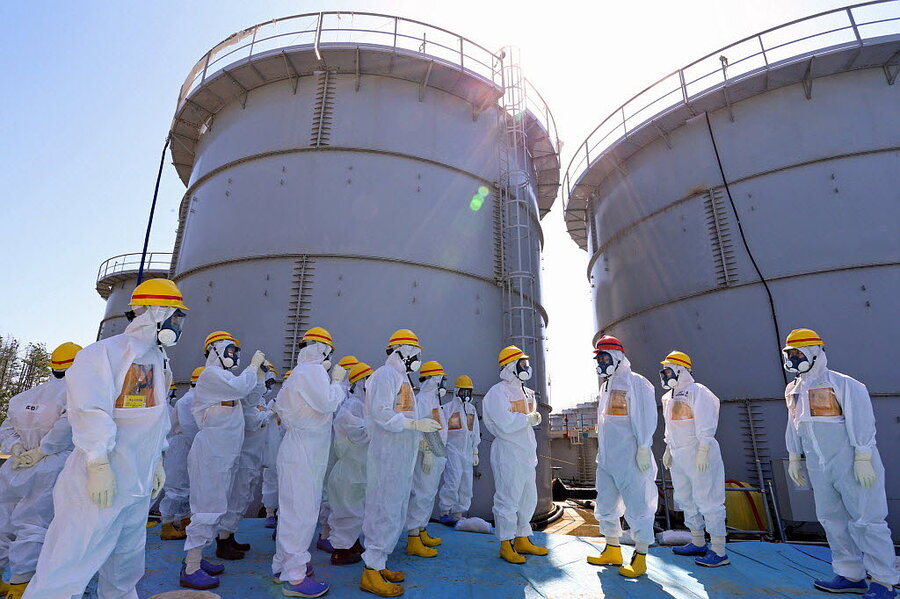Fukushima radiation in Canadian waters is not a threat, scientists say
Two forms of radioactive cesium from Japan’s Fukushima nuclear disaster have reached the continental shelf off British Columbia, but in concentrations much too low to represent a radiological hazard, according to measurements presented Tuesday at an ocean-science conference in Honolulu.
Meanwhile, small concentrations of cesium also have been found in water samples along the West Coast of the United States. But only one of the two forms of cesium has appeared, and its concentration is no higher than it was prior to the 2011 earthquake and tsunami that led to the partial meltdowns of three of the Fukushima plant's four reactors and compromised storage pools for spent fuel.
"I'm the first person to say radioactivity can be quite dangerous – we should be concerned. But maybe not at the levels we're going to expect coming across from Japan," said Ken Buesseler, a marine scientist at the Woods Hole Oceanographic Institution, at a briefing Tuesday during the ocean-sciences meeting, which was organized by three marine-science organizations.
At issue are two forms of radioactive cesium: cesium 134 and cesium 137. Both are byproducts of nuclear fission from nuclear power plants as well as nuclear weapons tests. Cesium 137 is of greater concern because it has a half-life of 30 years, compared with two years for cesium 134.
The oceans have low concentrations of cesium 137, a byproduct of atmospheric nuclear weapons tests in the 1950s and '60s. The cesium 134 from those events decayed long ago. So when cesium 137 and cesium 134 appear together, the presence of the shorter-lived cesium isotope signals that the two came from Fukushima, explained John Smith, a chemical oceanographer at the Bedford Institute of Oceanography in Dartmouth, Nova Scotia.
The far end in a line of measuring stations extending nearly 1,000 miles west from the mouth of British Columbia's Juan de Fuca Strait detected the arrival of cesium from Fukushima in 2012. But in 2013 it was detected all along the line up to the continental shelf.
For the US West Coast and Hawaii, no cesium 134 has been detected yet, and cesium 137 remains at background levels. But based on modeling results, the US West Coast could see the leading edge of a plume of cesium from Fukushima arrive at the continental shelf this year.
Last May, reports surfaced of tuna caught off southern California that carried trace amounts of cesium from Fukushima, although the levels were below food-safety thresholds. The news went viral, fueling concerns that the arrival of cesium-bearing waters would endanger fisheries and beachgoers.
But researchers say the levels of cesium they expect to see should remain far below levels that would trigger radiological food-safety warnings. Nevertheless, they want to continue tracking the radioactivity because of the relatively high level of public concern along the West Coast.
Measurements that researchers are making should help refine model estimates of how much of the cesium will reach the coast. Dr. Buesseler and Dr. Smith cite two being used that give different answers.
For the string of measuring stations off of Canada, one model predicts a 2013 arrival for cesium 137, with levels of radioactivity reaching a peak of about 25 becquerels per cubic meter of water in 2015. One becquerel represents the decay of one cesium nucleus per second.
The other predicts a 2014 arrival with levels of radioactivity peaking around 2017 at only 2 becquerels per cubic meter of water. Either way, these levels fall well below the US Environmental Protection Agency's standards for radioactive isotopes in drinking water.
The measurements along the Canadian line show an arrival time that supports the first model, while levels of radioactivity in the water are following the trajectory predicted by the second model, noted Smith. He said he expects to learn which is the more accurate of the two based on measurements from water samples taken this month but not yet processed.





